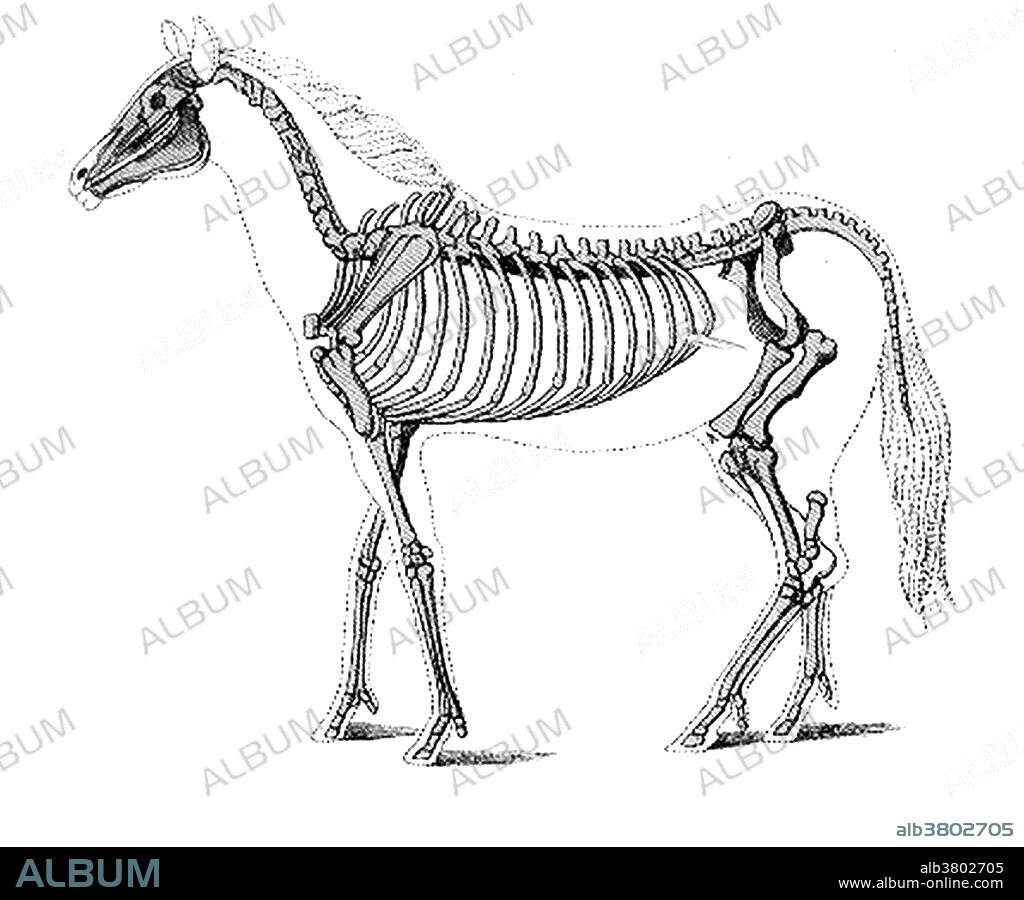alb3802705
Hipparion, Cenozoic Mammal

|
Añadir a otro lightbox |
|
Añadir a otro lightbox |



¿Ya tienes cuenta? Iniciar sesión
¿No tienes cuenta? Regístrate
Compra esta imagen.
Selecciona el uso:

Título:
Hipparion, Cenozoic Mammal
Descripción:
Ver traducción automática
Hipparion (pony) is an extinct genus of horse living in North America, Asia, Europe, and Africa during the Miocene through Pleistocene epochs. Hipparion resembled the modern horse, but still had three vestigial outer toes (in addition to its hoof). These did not touch the ground. This animal appeared during Cenozoic era, the most recent era of geologic time, from about 65 million years ago to the present. The Cenozoic Era is characterized by the formation of modern continents and the diversification of mammals and plants. Grasses also evolved during the Cenozoic. The climate was warm and tropical toward the beginning of the era and cooled significantly in the second half, leading to several ice ages. Humans first appeared near the end of this era.
Crédito:
Album / Science Source
Autorizaciones:
Modelo: No - Propiedad: No
¿Preguntas relacionadas con los derechos?
¿Preguntas relacionadas con los derechos?
Tamaño imagen:
3450 x 2852 px | 28.2 MB
Tamaño impresión:
29.2 x 24.1 cm | 11.5 x 9.5 in (300 dpi)
Palabras clave:
90S • ANIMAL • ANIMALIA • AÑOS NOVENTA • CABALLO • CENOZOICO • CHORDATA • COMIENDO • DECADA NOVENTA • DEDO DEL PIE • DIBUJO • EDAD • ESQUELETICO • ESQUELETO • EXTINCIÓN • EXTINGUIDO • FAUNA • GEOLOGICO • HERBIVORO • HISTORIA • HISTORICO • HUESO • HUESOS • ILUSTRACION • MAMIFERO • MAMIFEROS • MODERNO • OBRA DE ARTE • PALEOBIOLOGIA • PALEONTOLOGIA • PERIODO • PLANTA • PREHISTORIA • PREHISTORICO • PRIMARIA • RECONSTRUCCION • TERRESTRE • VERTEBRADO
 Pinterest
Pinterest Twitter
Twitter Facebook
Facebook Copiar enlace
Copiar enlace Email
Email
